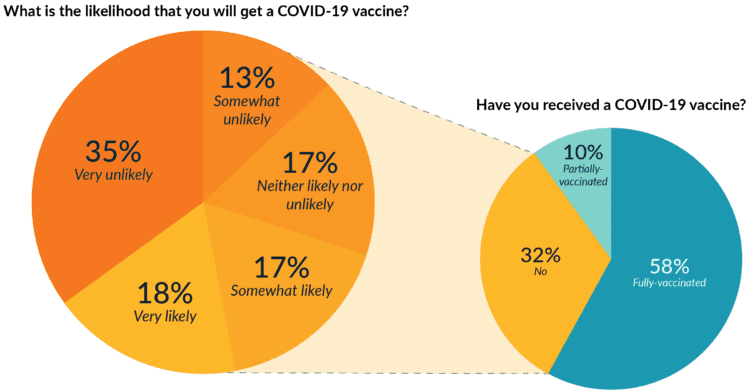


Approximately 58% (+/- 2%) of the adult population is fully vaccinated.
We’re still seeing many of the same demographic trends among the unvaccinated population that we’ve seen in the last several months of fielding these weekly surveys. Namely:
Among the currently unvaccinated, 47% are very unlikely or somewhat unlikely to get a COVID-19 vaccine in the future — this unvaccinated and unlikely to get vaccinated group represents about 20% of the entire adult population.